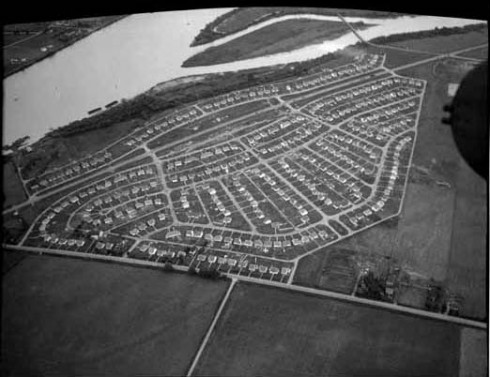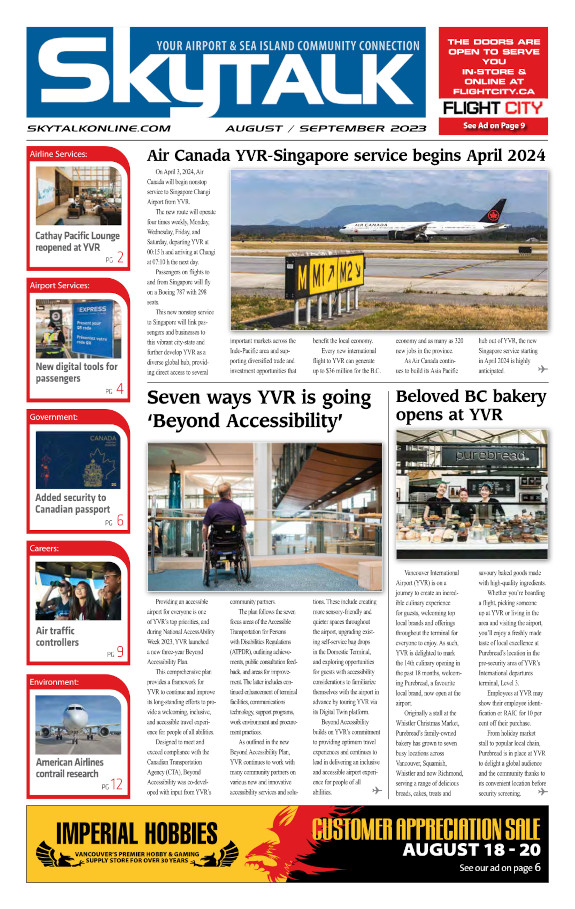Richmond’s Sea Island is home to more than our award-winning airport, it also has a lone residential area—the quaint community of Burkeville that hugs Russ Baker Way and was established in 1943 as a part of the Dominion Government’s Wartime Housing Plan.
The federal government established the neighbourhood and built 328 cottages for employees of Boeing, naming the development after Boeing’s president at the time, Stanley Burke.
All street names are based on the names of aircraft, and the main street is, not surprisingly, “Boeing”. Examples of other street names are: Catalina, Douglas, Handley, Anson, Hudson, Wellington, Stirling, and Lancaster. Architects McCarter & Nairn developed the design of the community, including the layout of the roads, sewers, pumping system and other services. It was designed with differing sized lots and curving roads to avoid a checker board appearance. (The Boeing Beam, Vol 1, No 10, May 12, 1943). Each house on its 50 x 100 foot lot was designed to provide the maximum allowed living space with ample fenestration and storage. All houses were between 700 and 900 sq. ft and had either 4 or 6 rooms. Each house fell into 1 of 3 designs, had 1 of 4 roof colours and 1 of 3 wall colours. [City of Richmond]
Ironically, the “plain, no-frills dwellings” were designed by McCarter and Nairne, who gave us the Marine Building. The name of the development was chosen in a competition among Boeing employees. [Darren Barefoot]
When the war was over, houses were sold to returning veterans. Eventually the airport expropriated and purchased several properties in the 1970s, breaking up pieces of the neighbourhood for airport use. A new bridge and a new highway were soon to flood the area with traffic and residents of the community became concerned about the future of their homes. The Burkeville Taxpayers Association applied and received a $40,000 grant from the Canadian Mortgage and Housing Corporation to study their situation and make recommendations. The results were grim as the ensuing report recommended that Burkeville be “phased out” as a residential area over the next 20 years.
Despite the recommendation, it was felt by residents and by Richmond planning staff that Burkeville had “valid social and personal financial reasons which warrant retaining Burkeville as a residential neighbourhood. Also, current land economics are such that redevelopment for industrial or commercial use is not feasible. Therefore, it is probably necessary to maintain Burkeville as a viable residential neighbourhood for some time yet, perhaps up to 20 years.” (Memo dated July 12, 1976 to William Kerr, Director of Planning for the Township of Richmond, regarding ‘Future of Burkeville and Related Matters’. p. 3). [City of Richmond]
To plan for the future, the community needed an overhaul. Burkeville’s bungalows and two-storey detached homes are still part of a family-oriented community today with playgrounds, tennis courts, a community centre, a church, and a school. There’s even an annual Halloween Mini Theme Park and the aviation-themed Flight Path Park that the kids love, and a Sea Island trail network.









